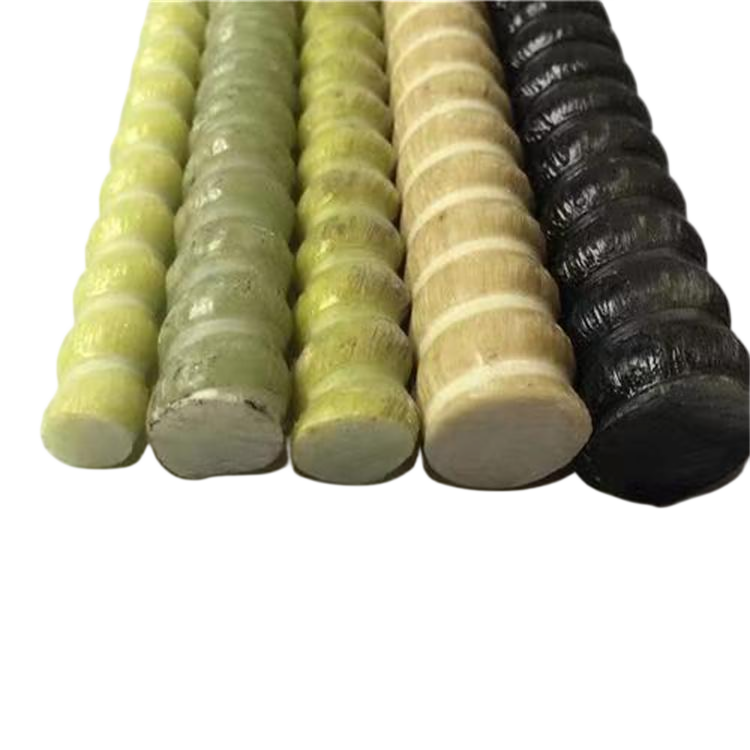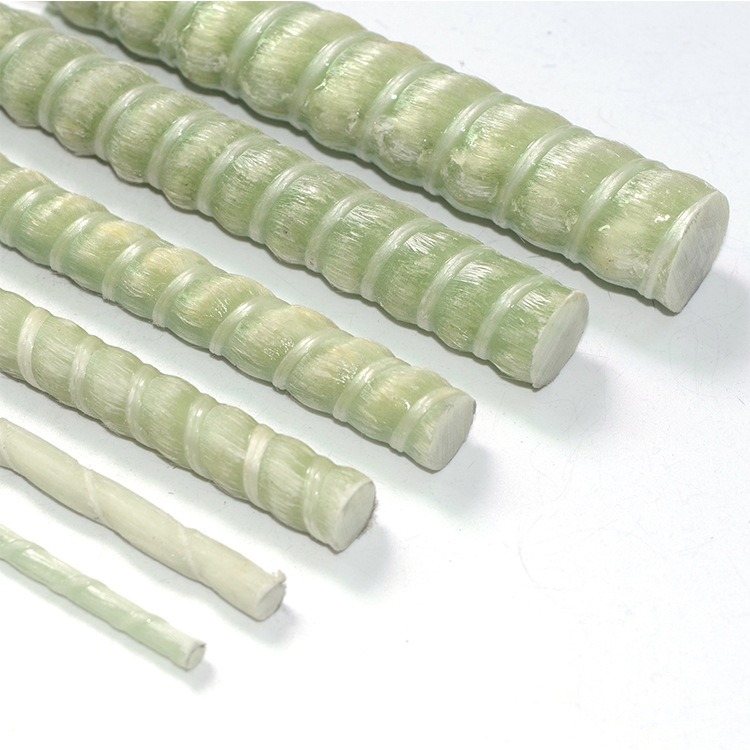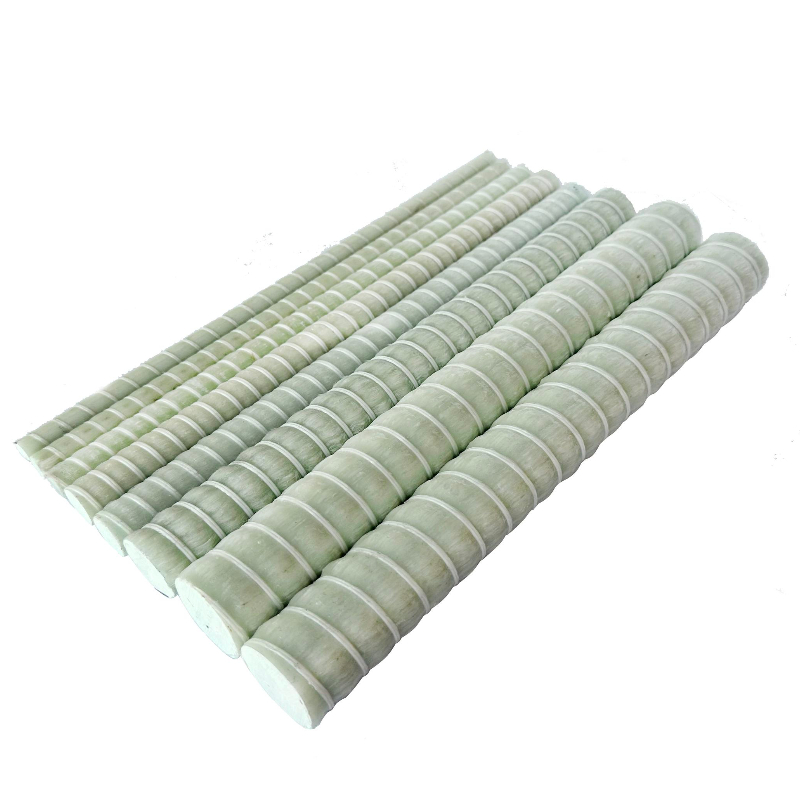Introduction
Fiberglass rebar has emerged as a revolutionary alternative to traditional steel reinforcement in concrete structures. Its unique properties, such as corrosion resistance and lightweight nature, have garnered significant attention in the construction industry. However, despite its advantages, fiberglass rebar is not without its drawbacks. Understanding these downsides is crucial for engineers and builders when selecting appropriate materials for their projects. This article delves into the potential disadvantages of fiberglass rebar, providing a comprehensive analysis to aid in informed decision-making. Moreover, we'll explore how Fiberglass Rebar compares to other reinforcement options in various applications.
Mechanical Properties and Limitations
Lower Elastic Modulus
One of the primary concerns with fiberglass rebar is its lower elastic modulus compared to steel. The elastic modulus of a material indicates its stiffness, and fiberglass rebar typically has an elastic modulus of approximately (0.3 to 0.7) × 105 MPa, which is about one-sixth to one-third that of steel. This difference means that fiberglass-reinforced structures can experience larger deflections under load, potentially affecting structural integrity and serviceability.
In applications where stiffness is a critical factor, such as in long-span bridges or high-rise buildings, the use of fiberglass rebar might necessitate additional design considerations. Engineers need to compensate for the reduced stiffness by increasing the cross-sectional area of the reinforcement or implementing alternative design strategies, which can lead to increased material costs and complexity.
Brittleness and Impact Resistance
Fiberglass rebar is inherently more brittle than steel. While steel can undergo significant deformation before failure, fiberglass rebar tends to fail suddenly without much warning. This lack of ductility poses challenges in situations where dynamic loads or impacts are expected. Structures subjected to seismic activity or heavy machinery vibrations may be at risk if reinforced solely with fiberglass rebar.
Additionally, the reduced impact resistance can limit the use of fiberglass rebar in applications where accidental overloads might occur. It becomes essential to carefully assess the loading conditions and consider hybrid reinforcement solutions that combine fiberglass with traditional steel to enhance overall performance.
Thermal Considerations
Coefficient of Thermal Expansion
The coefficient of thermal expansion (CTE) of fiberglass rebar differs from that of concrete. Fiberglass rebar has a higher CTE, meaning it expands and contracts more with temperature changes compared to concrete. This mismatch can lead to internal stresses within the concrete, potentially causing cracking or other forms of deterioration over time.
In environments with significant temperature fluctuations, this issue becomes more pronounced. Engineers must account for these thermal effects during the design phase, possibly requiring expansion joints or other mitigating measures to ensure the longevity of the structure.
Fire Resistance
While fiberglass rebar offers good thermal stability at moderate temperatures, its performance in high-temperature scenarios such as fires is a concern. The glass fibers themselves might retain strength up to 200–300°C without significant degradation. However, at temperatures exceeding 300°C, the strength of fiberglass rebar begins to decline, and the resin matrix can decompose, leading to a loss of structural integrity.
For structures where fire resistance is critical, relying solely on fiberglass rebar may not be advisable. Additional protective measures, such as increased concrete cover, fireproof coatings, or alternative reinforcement materials, may be necessary to meet safety standards.
Bonding with Concrete
Surface Characteristics
The smooth surface of fiberglass rebar can hinder effective bonding with concrete. Unlike steel rebar, which often features deformations to enhance mechanical interlock, fiberglass rebar's surface may not provide sufficient frictional resistance. This limitation can lead to slippage under load, affecting the composite action between concrete and reinforcement.
To address this issue, manufacturers have developed surface treatments and coatings to improve bond strength. These methods include sand coatings or helically wrapped fibers to create a rougher surface texture. However, these enhancements can increase production costs and may not entirely match the bonding performance of traditional steel rebar.
Chemical Compatibility
Fiberglass rebar is generally chemically resistant, but it can be sensitive to highly alkaline environments. Fresh concrete is inherently alkaline, which can, over time, affect the integrity of the fiberglass rebar if not properly protected. The use of specialized resins and coatings is necessary to ensure long-term durability.
Moreover, exposure to certain chemicals such as hydrogen fluoride or hot concentrated phosphoric acid can degrade fiberglass rebar. In industrial settings where chemical exposure is possible, evaluating the chemical compatibility of fiberglass rebar becomes essential to prevent premature failure.
Installation Challenges
Handling and Fabrication
Despite being lightweight, fiberglass rebar requires careful handling to avoid damage. Its brittleness means that it can crack or splinter if subjected to excessive bending or impact during transportation and installation. Workers need training on proper handling techniques, and special tools may be required for cutting and shaping.
Additionally, unlike steel rebar, which can be bent on-site to accommodate design changes or complex geometries, fiberglass rebar typically cannot be bent once manufactured. Custom shapes must be fabricated in advance, potentially leading to longer lead times and increased logistical complexities.
Health and Safety Concerns
Cutting and handling fiberglass rebar can pose health risks. The fine glass fibers can cause skin irritation and respiratory issues if inhaled. It is vital for workers to wear appropriate personal protective equipment (PPE), such as gloves, long-sleeved clothing, and respiratory masks, to minimize exposure.
These additional safety precautions can impact project timelines and require adherence to strict safety protocols. The need for PPE and training can also introduce extra costs that need to be factored into the project's overall budget.
Cost Implications
Material Costs
Fiberglass rebar is generally more expensive than traditional steel rebar on a per-unit basis. The manufacturing process for fiberglass rebar involves specialized materials and equipment, which can drive up costs. While the reduced weight can result in lower transportation expenses, the initial material cost remains a significant consideration.
For budget-sensitive projects, the higher upfront expenditure might be a deterrent. It's important to conduct a life-cycle cost analysis to determine if the long-term benefits, such as reduced maintenance due to corrosion resistance, offset the initial investment.
Availability and Supply Chain
Fiberglass rebar is not as widely available as traditional steel rebar. Limited manufacturing facilities and suppliers can lead to longer procurement times and potential delays in project schedules. In regions where fiberglass rebar is not commonly used, finding reliable suppliers can be challenging.
The specialized nature of fiberglass rebar also means that there may be less competition among suppliers, impacting price negotiations. Project managers must plan accordingly to ensure that supply chain issues do not adversely affect construction timelines.
Compatibility with Existing Design Codes
Regulatory Acceptance
Another downside of fiberglass rebar is the lack of comprehensive inclusion in existing design codes and standards. While organizations like the American Concrete Institute (ACI) have begun to address fiberglass reinforcement, the guidelines are not as mature or universally adopted as those for steel rebar.
This lack of regulatory clarity can complicate the approval process for construction projects. Engineers may need to provide additional documentation, testing results, or design justifications to satisfy building authorities and code officials.
Engineering Expertise
Designing with fiberglass rebar requires specialized knowledge. Many engineers and contractors are more familiar with steel reinforcement, and the unique properties of fiberglass necessitate a different approach to design and analysis. The learning curve associated with fiberglass rebar can lead to design inefficiencies or errors if not properly managed.
Investing in training and education is essential to fully leverage the benefits of fiberglass rebar while mitigating its downsides. Collaborating with manufacturers or consultants experienced in fiberglass reinforcement can help bridge the knowledge gap.
Environmental and Sustainability Considerations
Recycling Challenges
Fiberglass rebar poses challenges when it comes to recycling. Unlike steel, which can be readily recycled and repurposed, fiberglass materials are more difficult to process at the end of their life cycle. The lack of recycling infrastructure can lead to increased environmental impact due to disposal in landfills.
Considering the growing emphasis on sustainability in construction, the inability to recycle fiberglass rebar effectively may be viewed negatively. Developers aiming for green building certifications might need to weigh this factor against the material's performance benefits.
Energy Consumption in Production
The production of fiberglass rebar is energy-intensive. The processes involved in creating glass fibers and the composite matrix consume significant amounts of energy, potentially resulting in a higher carbon footprint compared to steel rebar production.
Environmental impact assessments should be conducted to understand the full implications. In some cases, the long-term durability and reduced maintenance needs of fiberglass rebar may offset the initial environmental costs, but this balance must be carefully evaluated.
Case Studies and Practical Applications
Success Stories
Despite the downsides, fiberglass rebar has been successfully used in various projects where its advantages outweigh the disadvantages. For instance, in environments prone to corrosion, such as marine structures, fiberglass rebar's resistance to chemical attack has proven invaluable. Its non-conductive nature makes it ideal for use in facilities where electromagnetic neutrality is required, like MRI rooms or power stations.
Companies like SenDe have developed advanced Fiberglass Rebar solutions tailored to demanding applications, offering customizable sizes and lengths to meet specific project needs. These innovations demonstrate that, when applied appropriately, fiberglass rebar can provide significant benefits.
Lessons Learned
From various projects, it becomes evident that thorough planning and understanding of fiberglass rebar's properties are essential. Successful implementations often involve close collaboration between engineers, suppliers, and contractors to address the material's limitations proactively. By learning from these experiences, future projects can better mitigate the downsides associated with fiberglass rebar.
Conclusion
Fiberglass rebar presents a compelling alternative to traditional steel reinforcement, offering advantages like corrosion resistance, lightweight handling, and non-conductivity. However, its downsides—including lower stiffness, brittleness, thermal expansion differences, bonding challenges, higher costs, and recycling difficulties—require careful consideration. By thoroughly understanding these limitations, engineers and builders can make informed decisions about when and how to utilize fiberglass rebar effectively. Balancing the benefits with the potential drawbacks ensures that structures are safe, durable, and cost-effective over their intended lifespan. Exploring solutions from industry leaders like SenDe can provide access to advanced fiberglass rebar products that address some of these concerns, further enhancing the material's viability in modern construction.
Frequently Asked Questions
1. What are the main disadvantages of using fiberglass rebar in construction?
Fiberglass rebar has several downsides, including a lower elastic modulus leading to increased deflection, brittleness causing sudden failure under impact, challenges with bonding to concrete due to smooth surfaces, higher material costs, and difficulties with recycling at the end of its lifecycle.
2. How does the thermal expansion of fiberglass rebar affect concrete structures?
Fiberglass rebar has a higher coefficient of thermal expansion than concrete, which can cause internal stresses and potential cracking as temperatures fluctuate. This mismatch requires careful design consideration to mitigate thermal stress effects in structures.
3. Can fiberglass rebar be bent on-site like steel rebar?
No, fiberglass rebar cannot be easily bent on-site due to its brittle nature. Custom shapes must be fabricated during manufacturing, which reduces flexibility during construction and may increase lead times and costs.
4. Is fiberglass rebar suitable for use in fire-prone areas?
Fiberglass rebar may not perform well in high-temperature scenarios such as fires. Its strength declines above 300°C, and the resin matrix can degrade, potentially compromising structural integrity. Additional fireproofing measures are necessary when using it in fire-prone areas.
5. What precautions should be taken when handling fiberglass rebar?
Handling fiberglass rebar requires wearing appropriate personal protective equipment (PPE) to prevent skin irritation and respiratory issues caused by fine glass fibers. Workers should use gloves, long sleeves, and masks, and be trained in proper handling and cutting techniques.
6. How does the cost of fiberglass rebar compare to steel rebar?
Fiberglass rebar is generally more expensive than steel rebar on a per-unit basis due to specialized manufacturing processes. However, it offers long-term benefits like corrosion resistance, which can reduce maintenance costs over the lifespan of a structure.
7. Are there standards and codes for designing with fiberglass rebar?
Design codes for fiberglass rebar are less comprehensive compared to those for steel. While organizations like the American Concrete Institute have guidelines, they are not as widely adopted. Engineers must often provide additional documentation to comply with regulatory requirements.




























